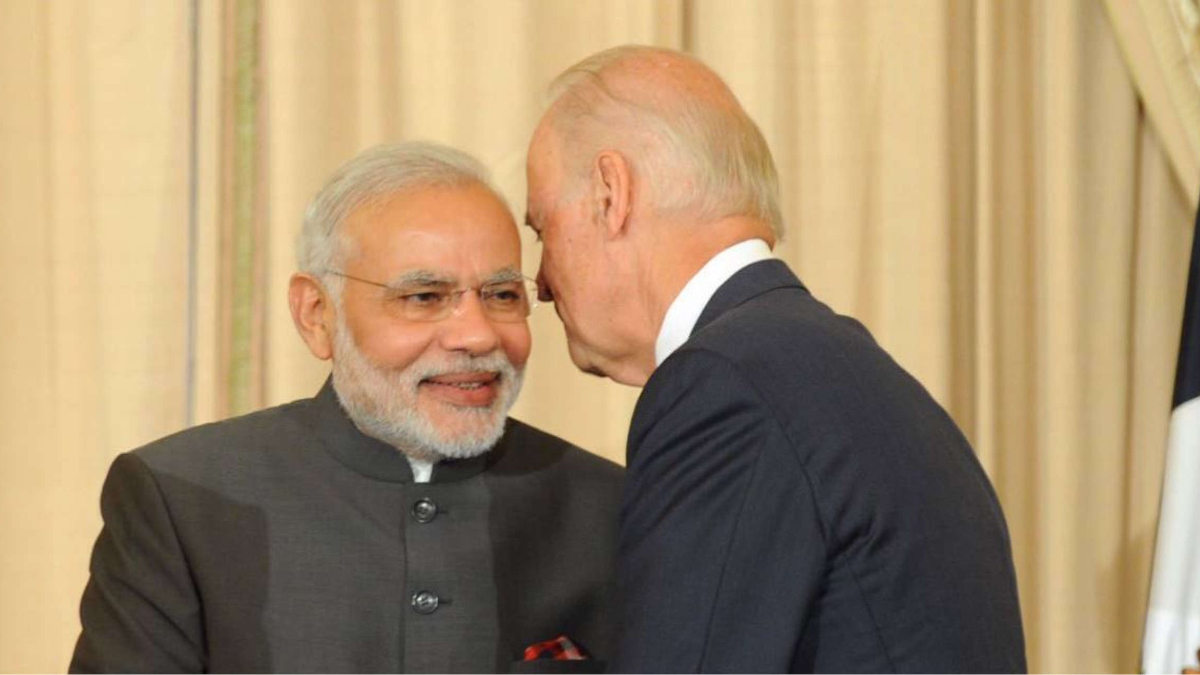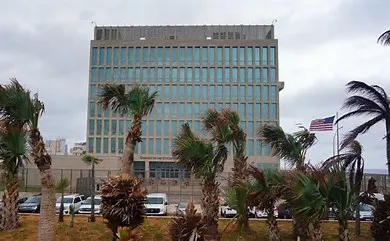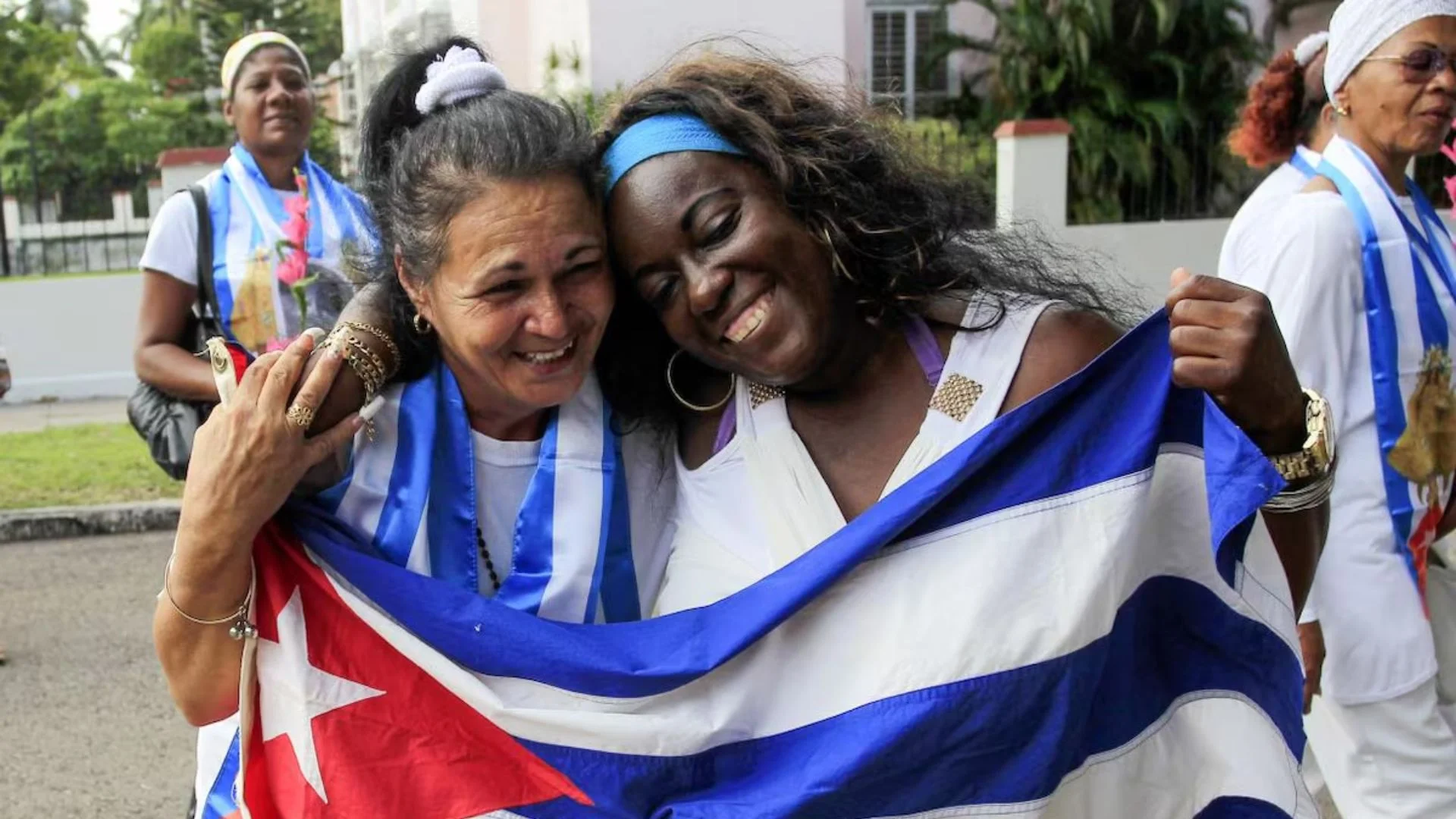The India-US bilateral cooperation is broad-based. Its vista is multisectoral—trade and investment, defence and security, education, science and technology, cyber security, high-tech, civil nuclear energy, space technology and applications, clean energy, environment, agriculture and health. The India-US Dialogue Architecture consists of a high level 2+2 dialogue and more than 50 other bilateral dialogue mechanisms. People-to-people interaction is vibrant. This partnership cuts across the political spectrum in both countries. India and the US are ‘Major Defence Partners’ with cooperation in counter-terrorism, intelligence sharing, information exchange, operational cooperation, technology, training and equipment.
Pundits have aired views on how the new Biden administration will approach the India-US relationship. As the uncertainty of who will be the next US President, plays itself out, let me put it up front. The India-US relation is strategic and will change marginally with personalities. It has been developed over two decades since the turn of the century. The early interlocutors were Jaswant Singh Minister, then External Affairs Minister, and Strobe Talbot, then Deputy Secretary of State. The trajectory of this relationship has risen with each new President. If the 21st century is all about China’s rise, the India-US strategic partnership is the ‘Enduring Global Partnership’ which can equally define this era. Leave polemics aside, focus on the realities of the relationship to get a better understanding.
ENDURING REALITIES
The India-US strategic partnership has a deep sociological phenomenon. Brilliant and hardworking first generation Indians made the US their home and contributed to its greatness while still retaining some connect with India. Their second generation Americans of Indian descent like late Kalpana Chawla, Bobby Jindal, Kamala Harris and Nikki Hailey have gone on to become astronauts, senators, state governors, ambassadors now even a Vice President (across the political divide). Reflect. One does not find second generation Americans of Chinese or Pakistani descent in the same bracket. This phenomenon is expanding with a thriving Indian community increasing in prominence in the US. There is great depth to this relationship.
In an era where autocracies are blooming, India and the US remain the two great democracies despite all their inadequacies. The oldest democracy and the largest one are kicking alive. The recent US presidential elections and the legislative cliff-hanger in Bihar showcase resilient democracies at work. Both countries have repeatedly shown that they have the capacity to discard people, who become too big for themselves, like soiled diapers. Both countries have withstood immense hardships and adversities to rise again. These are great values to cherish.
Recent events have wrought critical changes in both countries. India, badly affected by the Virus, weathered it with a plan and is recovering. Its economy has started to chug back. Most importantly, India exorcised the Ghost of 1962 by stopping Chinese aggression in its tracks in Eastern Ladakh. If reports coming in are true, China might actually step back and vacate areas forcibly occupied by it. This will be the first time in recent Chinese history. India has embarked upon “aatmanirbharta” with this new found confidence of being able to tackle China. USA has tackled the Virus haphazardly and has suffered serious casualties. Its economy has been hit seriously. The country stands deeply polarised and divided. The last time one saw the US wracked by riots was during the Vietnam War. Things are way more serious this time. A lot of internal healing to do. Tough days ahead. The gap has narrowed between the two nations. However, this is the time to show empathy, cooperation and mutual respect rather than gloating or pontification or unwanted prescriptions towards each other.
China and Pakistan—the iron brothers—are major threats to both countries. China badly wants to displace the US as the leading power and cap India’s rise. It has unleashed a multi-domain contest, often using very questionable means to achieve global domination and a Chinese World Order. China will persist with its effort and must be countered jointly. Two decades back this was foreseen. The strategic partnership was embarked upon by de-hyphenating Pakistan from the equation. Chinese role in spreading the virus and its unwarranted expansionist aggression has incensed the public in India and the US. This will solidify the partnership. Pack-istan oh Pakistan! The most dangerous country on earth can never be ignored. The twin Towers attacks; the only attack on US soil since Pearl Harbor, mounted from Afghanistan, had Pakistani roots. Osama bin Laden was in Abbottabad not on Mars. The Afghanistan peace process will be attempted to be hijacked by Pack-istan to satisfy its addiction to strategic space. Pakistan will remain a state sponsor of terrorism with its ‘Hate India’ ideology. Pack-istan kept under control is the key to US homeland security and peace in India. CPEC is the key terrain battle to tackle China. In any calculation a degraded Pakistan must be made a millstone around China’s neck. Containment of China and Pakistan under check is of critical interest to both nations and the World at large. Other threats pale in comparison. In India there is absolute clarity on this. If some in the US see it any other way, they have blinkers on.
CURRENT REALITIES
The Chinese Virus has taken a toll on the world and has affected people far and wide. The Virus will not get away from us for the next two to three years. The US with its research capability is on the verge of a vaccine breakthrough. India has the production capacity and the expertise in handling and eradication of pandemics. Add these two together and global leadership is back on track to aid people genuinely and wean them away from Chinese malignancy. It is an opportunity that leadership of both nations must utilise.
What Hitler and Nazis were to the last century, Xi Jinping and the CCP are to this century. All the talk of the benign rise of China is poppycock. China has a large military which it wants to modernise as the most powerful military on earth. Only Indian and US armed forces can stop its malignant march. Not alone, but together. As per a Rand Report ‘distance and geography work against the United States and largely counterbalance its military strengths, especially in scenarios around China’s immediate periphery. China’s ability to project power to more distant locations remains weak, and the United States continues to hold more decisive advantage at a distance from China’s coast’. Its ability to project power at a distance will improve with time, unless interfered with. Maintaining this condition should be the base case of ‘Chinese Containment’ for the Indo Pacific strategy. The Rand Report analyses a Sino US conflict framework. It has not factored in India. Examine the current scenario. Substantial PLA forces committed in Eastern Ladakh are fixed by India. Resultantly Chinese belligerence has been confined to its immediate periphery in the Pacific Seas. It could not venture afar. It has not been able to embark on any major offensive manoeuvre. The US, with forces available to it, has been able to contain PLA in Chinese periphery despite what is outlined in the Rand report. Conversely, presence of three US aircraft carriers in the Pacific has pressurised China to restrict its adventurism against India. To think that India needs rescuing by US forces in the Himalayas or that India has to sail into the south China Sea is naïve thought. Military synergy is not physical. It is mental and situational. The current situation has exposed many shortcomings of PLA. Most importantly China must prepare for a two front confrontation which is presently beyond its capability. This will throw spanners in Chinese military modernisation and future capabilities. If China has to be contained militarily, the USA and India need greater synergy in future. In any case this is not the latest discovery since the apple fell on Newton›s head. Indian and US Forces, have been going through extensive training programmes at individual, collective, national and international levels. There are many areas of defence cooperation which have evolved over time. If Tibet, Taiwan, Hong Kong, Mongolia and Xinjiang are added to pose a joint asymmetric threat, then the Chinese fat will be on fire.
The US and India are large consuming economies. They need secure supply chains independent of China. Their economies can grow only if China is dampened. Economic containment of China hinges on success of decoupling of supply chains and squeezing its exports. China is acutely aware of this. It will do its utmost to break the decoupling process to ensure eternal dependence on China. Relocation of supply chains to BRI countries under debt to China might see relocated industry being blocked from being established, being owned by China in proxy / through investment or the relocation facility could be undermined by subterfuge so that end users will have to revert to China for supply. Hence relocation has to take place in a country which is safe from Chinese poaching and has the capacity cum scale to meet global requirements. Look where you want. The answer will be found only in India. Containment of China will be further effective if BRI is slowed down or reduced in scale. All this is possible only if the US and India anchor the Quad and form an economic and trade forum to set up alternative Infrastructure models and supply chains. If India and the US get together and make Quad a success, global economic recovery is automatic. There is also considerable scope for expansion of direct Indo US trade. The Indo US economic partnership possibilities are many. The economic partnership has the potential of providing global leadership through the Quad platform or otherwise. In turn the Quad platform has the bandwidth to get ASEAN, Pacific countries, IOR and large parts of the EU on board. Lots of scope and options. It will need focused action by both administrations.
The US and India are space and nuclear powers. They already have a civil nuclear agreement. They have potential to get their act together in space also. As it stands there is adequate cooperation between NASA and ISRO in space exploration. The frontier ahead is joint exploration of space based energy. All the efforts to get to Mars and Moon are ultimately about energy security for the next generation. In the same vein both countries would be natural partners in development of AI and robotics. More than anything, AI demands a scale of high volumes repetitively, in getting things right. Both countries have good linkages in the energy sector which needs to be boosted. Also there is tremendous scope to get into renewables for the future.
INTO THE FUTURE
The trajectory of the India-US strategic partnership has risen with time and the bandwidth has also widened. Both countries are at a historical point where they must reinvent themselves for a better future. As and when the leadership of the two great democracies sit to talk, there are far more important issues to focus upon for their respective people than the pinpricks which keep appearing in the media.
Lt Gen P.R. Shankar was India’s DG Artillery. He is highly decorated and qualified with vast operational experience. He contributed significantly to the modernisation and indigenisation of Artillery. He is now a Professor in the Aerospace Dept of IIT Madras and is involved in applied research for defence technology. His other articles can be read on his blog www.gunnersshot.com.























